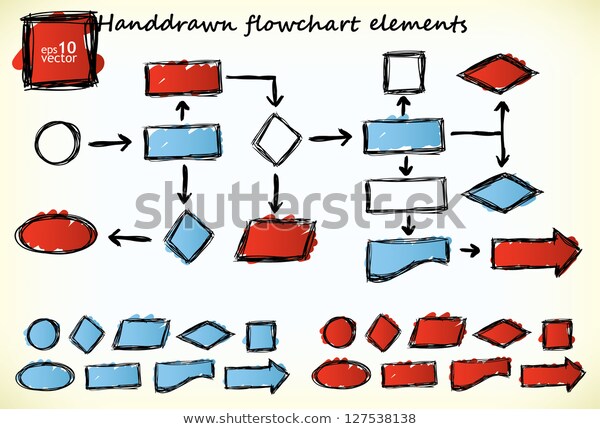QUALITY CIRCLE
- INTRODUCTION
- HISTORY
- PROBLEM
- PROBLEM SOLVING APPROACH
- 7 PROBLEM SOLVING TOOLS
- 12 STEPS OF QUALITY CIRCLE
INTRODUCTION:
Quality circle is very important to know the actual causes and root causes of defect.
QC circle is a small group of 6 to 10 employees who work together to identify the problem in their work areas and eliminate the problem using various tools & techniques and, if possible, make further improvements. Membership of the quality circle is the most voluntary. Each circle is lead by a supervisor. Group Members of quality circle meet regularly every week or according to an agreement. Team members are specially trained in technique of analysis and problem solving tools and techniques.
Definition:
- Quality circle is a form of participatory management.
- Quality circle is a human resource development technique.
- Quality circle is a problem solving technique.
what is problem?
Problem :
It is an opportunity for improvement.Or
Problem is the result of the performance of various contributing factors.
That means, there are many contributing factors that create the problem. So in problem solving, we are find out those contributing factors and take action on it and try to improve it. This is opportunity for improvements that we improve.
Yes guys, so now understand that,
What is Problem solving?
Problem solving:
Problem solving is a set of activities that is required to find out the effective solution of the problem.Many problems solving approaches used in industries. For example: PDCA, DMAIC, A3, 8D & Quality circle etc.
But we will discuss on one approach named Quality circle which is most popular today and also interesting.
Hey guys, I am giving an example in which you will understand that why Quality circle is important. This example is very good and simple in understand.
Example:
I Hear ➖ I Forget :
I See ➖ I Remember :
Do ➖ I Understand:
What I mean to say is that whatever problem solving tools that you learn, try practically applying them in your manufacturing processes or any processes to get the improvements. Only after that you will have understanding of everything.
Friends, now lets talk about what is Quality circle approach?
Quality circle approach:
Quality circle approach is the way to bring improvements in the processes by capturing the creativity of workforce in industry.In Quality circle approach, basically
The associates and supervisors of the shop floor identifies the problem, Form a team leads the project to make improvements.
Every companies have fix team of quality circle to which they give different - different name. Every Quality circle team consists of 4-5 members who select one of the major work related problem on the shop floor and work to eliminate and improve it.
Quality circle team identify the problem whether it is from the Quality, productivity & other line. And it converting a project and solve it through quality circle approach.
HISTORY:
Origin of the quality circle in Japan:
- After WW2, the plight of Japanese companies.
- Dr. Edward Deming's expert statistical quality control technique from the U.S. to Japan at the request of Japan's Ganeral Mac Arthur.
- In 1956, the quality control program organized by JUSE was broadcast on radio and television.
- In the year 1960, the government of Japan declared the National Quality Month every November.
- In 1962, the first quality circle was established under the leadership of professor K. Ishikawa.
- In 1971, the first National Quality Circle conference and In 1978, the first International Quality Circle conference was held in Japan.
- Thus, this ideology was also made increasingly in other countries.
Origin of Quality Circle in India:
- In January 1981, an article was published in financial export magazine. That was it "If Japan can why can't we".
- In November 1981, Mr. S.R Udappa who was the general manager and having 5 Quality Circles project in Bhel. And In India, the first book on Quality Circle is from him.
- In January 1982, he was broadcast through radio what he had learned while leading to first 5 QC circles project.
- After that, In April 1982, QCFI (Quality Circle Form of India) launches in India.
SEVEN QC Tools:
- Check sheet
- Histogram
- Pareto diagram
- Scatter diagram
- Cause and effect diagram
- Flow diagram
- Control chart
1. Check sheet :-
Purpose :-
- Tools for collecting & organizing measured & counted data
- Data collected can be used as input data for other quality tools
2. Histogram :-
Histogram की मदद से हम collected data के distribution को समझते हैं उसके बाद हमे आगे action लेने में आसानी रहती हैं।
3. Pareto diagram :-
When to use Pareto :-
- Prioritising problem
- Analyzing symptoms
- Proving effectiveness of remedy
4. Scatter diagram :-
5. Cause and effect diagram :-
Purpose :-
Benefits :-
- यह potential causes को identify करने में मदद करता है।
- Brainstorming relationship को establish करता हैं।
- Problem के causing factor को समझने में मदद करता है।
6. Flow chart :-
Benefits :-
- यह हमे process improvement की opportunity को identify करने में मदद करता है।
- Process को समझने मे help करता है और अगर process मे कोई non value added activity है तो हम उसको भी identify करके improve कर सकते हैं।
7. Control chart :-
Purpose :-
- Control chart indicates whether a process is in control or not.
- It ensures product quality level
- To identify the dynamic or special causes of variation in a repeating process
TWELVE STEPS OF QUALITY CIRCLE:
- Identification of work related problems
- Selection of problem
- Define the problem
- Analyze the problem
- Identification of cause
- Finding out the root cause
- Data analysis
- Doveloping solution
- Foreseeing probable resistance
- Trial implimentation
- Regular implimentation
- Follow up & review
👍
Thank you 😊Some of related question that help to improve your basic knowledge.











